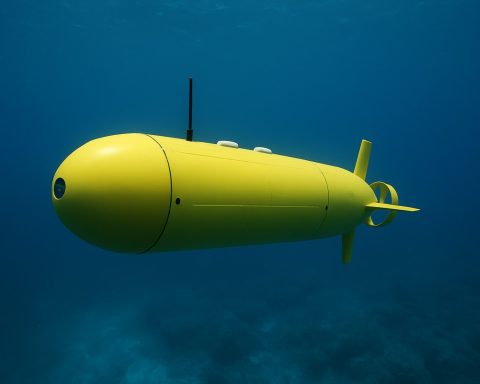- Porsche launches an innovative pilot project to repurpose aging EV batteries by extracting valuable raw materials.
- The process involves shredding used batteries to create “black mass,” rich in nickel, cobalt, manganese, and lithium.
- 65 tonnes of black mass harvested, showcasing the efficiency and potential of resource recovery.
- Extracted materials are refined to meet Porsche’s high-performance standards for new electric models.
- Porsche aims to incorporate recycled materials into new battery cells, highlighting a commitment to sustainability.
- The project supports the company’s strategic response to EU regulations demanding higher recyclability by 2031.
- This initiative underscores Porsche’s dedication to responsible resource use and positions the automaker against raw material market volatility.
Glistening with ambition and foresight, Porsche’s latest venture marks a pivotal stride in the ever-evolving landscape of electric vehicles. The iconic automaker has launched an ambitious pilot project aimed at rewriting the narrative of battery disposal. With an eye toward sustainable future, Porsche is endeavoring to transform aging EV batteries into treasure troves of essential raw materials.
Under the project’s distinctive approach, the worn-out batteries are mechanically shredded, a process that meticulously reduces them to a unique substance known as “black mass.” Through this initiative, Porsche seeks to mine valuable components like nickel, cobalt, manganese, and lithium from this nondescript powdery residue. In the shadow of these industrial marvels lies the grand objective: crafting a circular supply model that promises not only resource recovery but also a safeguard against tomorrow’s uncertainties.
The magnitude of this transformation becomes evident when examining the outcome thus far—a staggering 65 tonnes of this black mass has been salvaged from expired development vehicle batteries. Each granule speaks volumes about efficiency and innovation at play.
Once extracted, this black mass undergoes thorough refinement. Here, the elements are distinctively separated and purified, allowing Porsche to uphold the rigorous performance standards its new electric models demand. The enigmatic beauty of this process lies in the unwavering pursuit of quality and consistency, aspects that Porsche emphasizes as linchpins for the pinnacle standards it enshrines.
Marking the crescendo of its multifaceted pilot project, Porsche plans to integrate a defined percentage of recycled materials into new battery cells, which will soon undergo real-world performance trials. This progressive initiative doesn’t merely encapsulate engineering prowess; it unveils a storied commitment to sustainability at the heart of Porsche’s strategic ethos.
Stepping beyond merely tracing environmental footprints, the initiative seizes upon reducing ecological impacts and affirming a resolute stand against the geopolitical turbulence pervading raw material markets. As change looms, with impending EU regulations in 2031 demanding higher recyclability standards for batteries, Porsche’s timely maneuvers are anything but coincidental.
This groundbreaking endeavor serves as a clarion call for the automotive industry, showcasing Porsche’s unwavering resolve towards responsible resource utilization. As the company leverages its legacy to drive forward into a sustainable future, the takeaway is undeniable—one automaker’s waste might just become the next generation’s wealth.
Porsche’s Revolutionary Battery Recycling: Transforming Waste into Wealth
Unveiling the Future of Battery Recycling with Porsche
Porsche’s latest venture into battery recycling is not just a sustainability initiative; it’s a paradigm shift in how the industry approaches resource recovery. While the core facts around this project are explored, there are numerous additional facets that magnify its significance and potential impact.
How Does Porsche’s Battery Recycling Work?
1. Collection & Shredding: Used EV batteries are collected and mechanically shredded into “black mass,” a substance rich with valuable minerals.
2. Extraction & Refinement: From the black mass, essential elements such as nickel, cobalt, manganese, and lithium are extracted and purified.
3. Integration into New Batteries: These refined materials are then poised for reintegration into new batteries, sustaining a circular production model.
Key Facts and Benefits
– Circular Economy: By reusing materials, Porsche is not only minimizing waste but also reducing the need for new mining, which has significant environmental and geopolitical implications.
– High Efficiency: Recovering up to 65 tonnes of black mass demonstrates Porsche’s commitment to scalable and efficient recycling processes.
– Alignment with EU Regulations: With impending 2031 EU recycling standards, Porsche’s strategy is forward-thinking and regulatory-compliant.
– Performance Standards: Ensuring rigorous quality and consistency means the recycled materials meet Porsche’s high-performance standards for new electric models.
Real-World Use Cases and Industry Impact
– Automotive Industry Transformation: Porsche’s initiative could set benchmarks for other automakers to follow, emphasizing environmental responsibility.
– Economic Advantages: Reducing dependence on volatile raw material markets can lead to cost savings and stability in supply chains.
– Innovation in Sustainability: This project illustrates how innovation can drive sustainability, leveraging technology for resource-efficient production methods.
Challenges and Controversies
– Technical Challenges: The process of extracting and refining elements from black mass can be technically complex and costly initially.
– Market Readiness: While promising, the transition to fully integrating recycled materials into new batteries must meet existing performance expectations.
Predictions and Industry Trends
– Increased Adoption: More automakers will likely adopt similar recycling models, driven by regulatory pressures and consumer demand for eco-friendly products.
– Advancements in Recycling Tech: As technology evolves, more efficient and cost-effective recycling methods are expected.
– Heightened Consumer Awareness: Consumers are becoming increasingly aware of sustainability issues, potentially influencing purchasing decisions.
Actionable Recommendations
– Automakers should invest in research and development for battery recycling technologies.
– Consumers can support brands that prioritize sustainability and recycling initiatives.
– Policymakers should incentivize sustainable production practices in the automotive industry.
Conclusion
Porsche’s battery recycling initiative is a monumental step towards reducing ecological footprints and enhancing resource security. This project not only exemplifies engineering mastery but also a deep-seated commitment to a sustainable future. Its success will hinge on continued innovation, collaboration with regulatory bodies, and consumer support.
For more insights into the automotive industry and sustainability initiatives, visit the official Porsche website.









